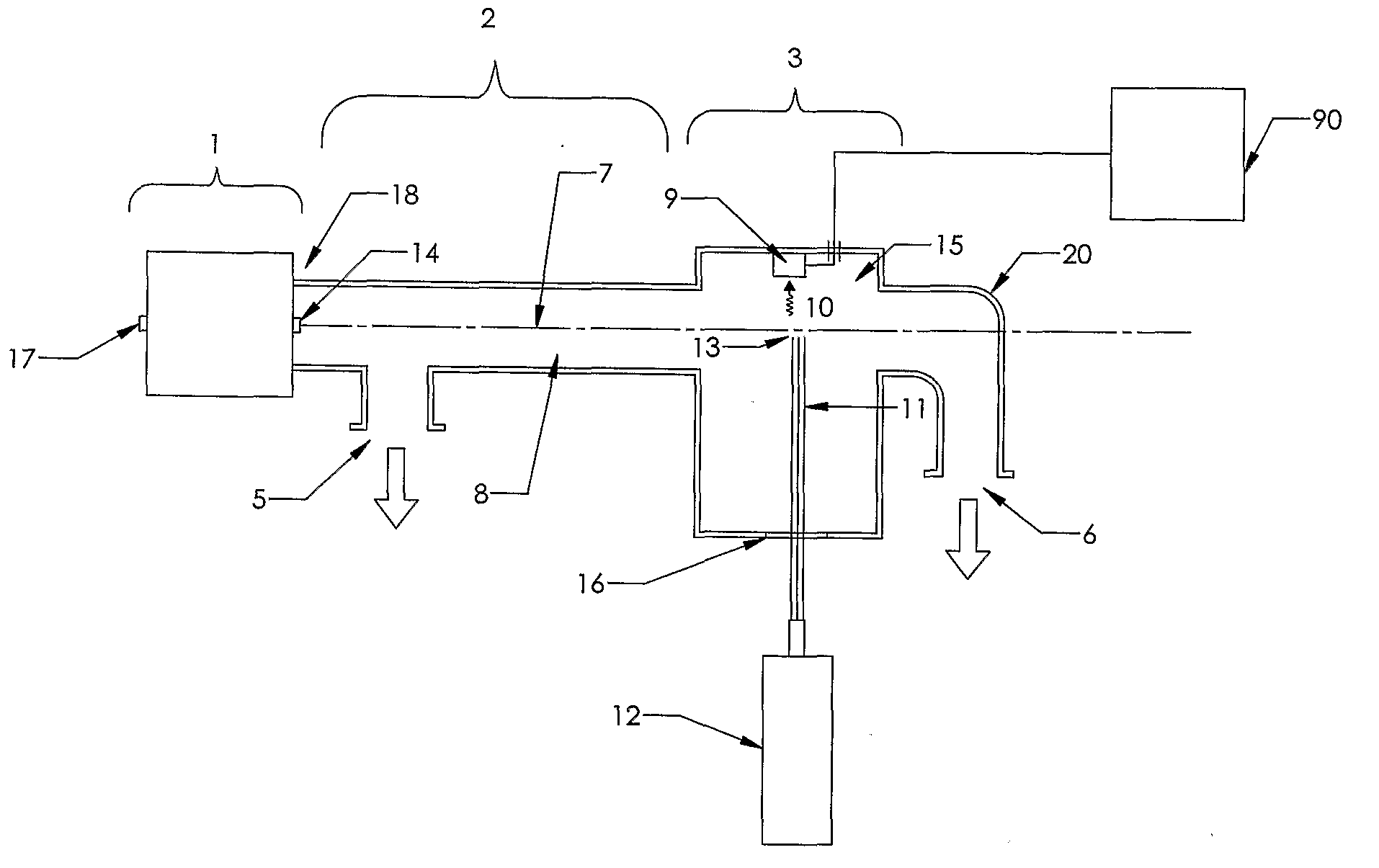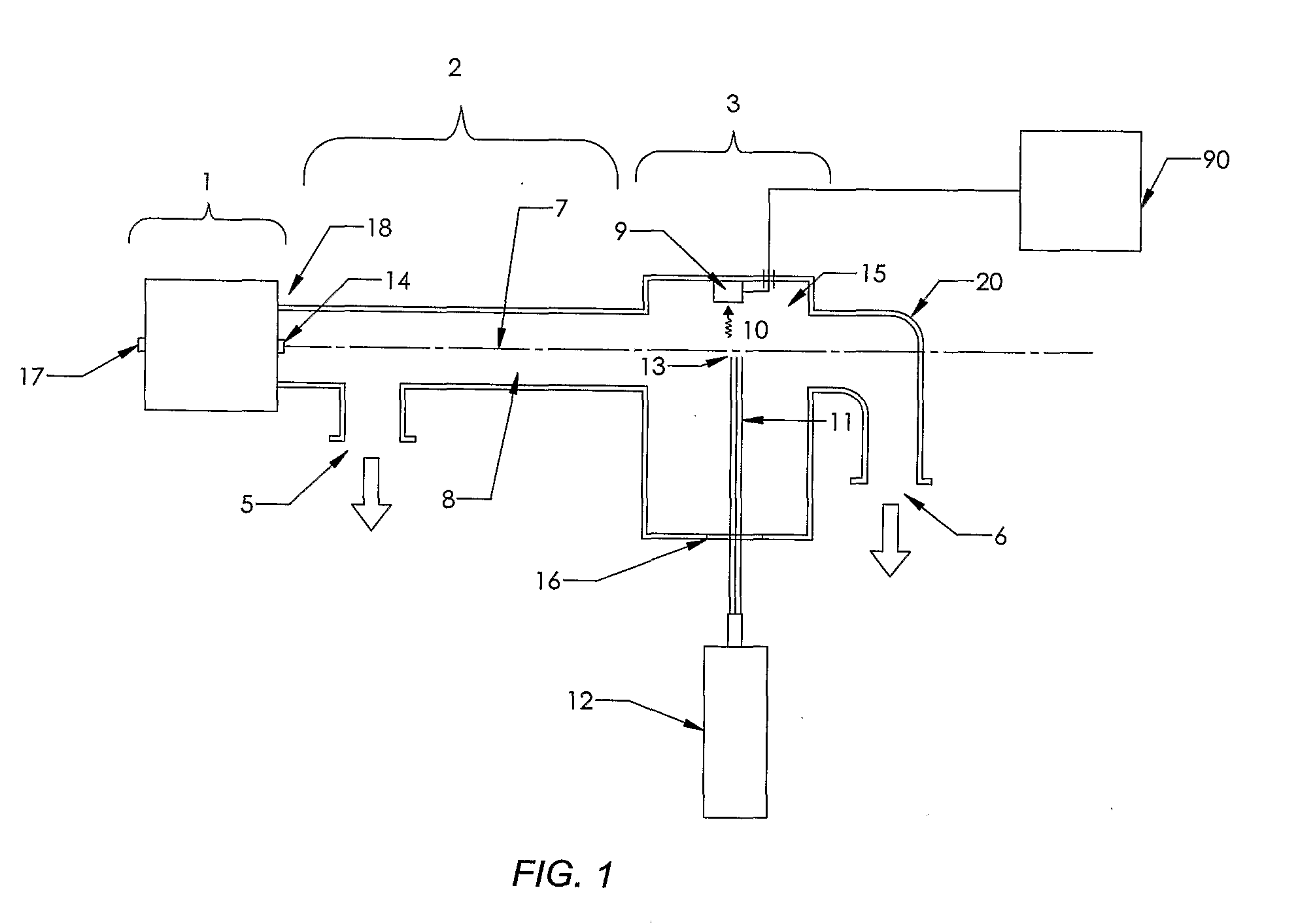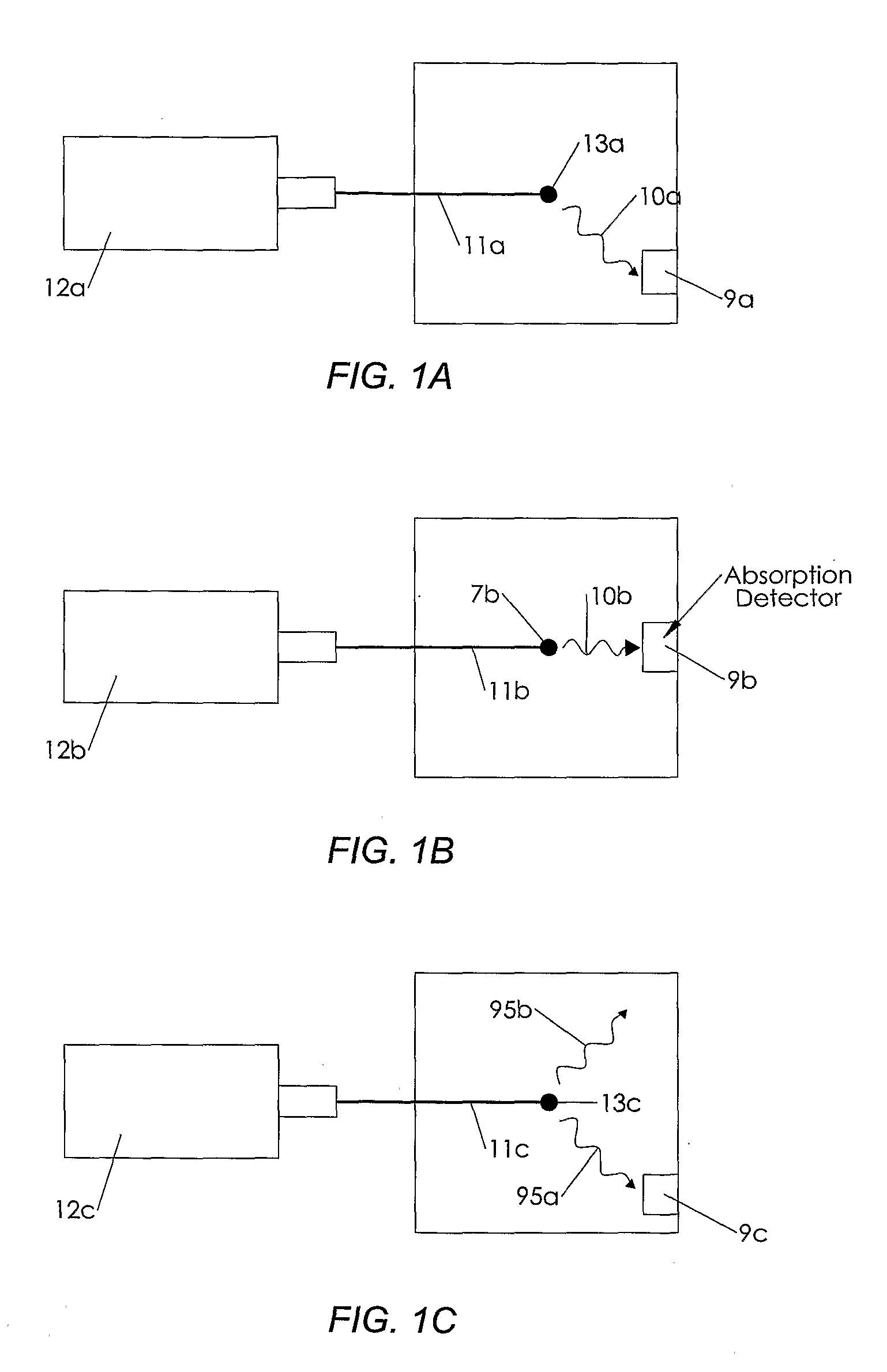High-Speed Molecular Analyzer System and Method
a molecular analyzer and molecular technology, applied in the field of molecular analyzer systems and methods, can solve the problems of requiring very large amounts of sequencing capacity, unable to meet the future needs of genomics, and being entirely too slow and too costly to be practical, so as to achieve the effect of less failure of parts and lower labor cost per sampl
- Summary
- Abstract
- Description
- Claims
- Application Information
AI Technical Summary
Benefits of technology
Problems solved by technology
Method used
Image
Examples
Embodiment Construction
[0160]The present invention is a novel device and method for the high speed analysis of molecules for determining characteristics such as atomic composition; mass; sequence of subunits and the concentration of one or more molecules in a sample. The invention may also be used for nucleic acid sequencing; DNA sequencing; single nucleotide polymorphism (SNP) analysis; and protein sequencing.
[0161]In one example embodiment of the invention an apparatus is provided for determining the sequence of bases or nucleotides in a nucleic acid such as DNA or RNA.
[0162]The basic steps involved in the process include:[0163]a) Making copies ranging in length from 1 nucleotide to the same length as the molecule under analysis;[0164]b) Incorporating a base specific molecule at the end of the copy that corresponds to the base of the original molecule at that position and has a dye molecule that emits a uniquely identifiable spectrum when induced by external means;[0165]c) Vaporizing the molecules;[0166...
PUM
 Login to View More
Login to View More Abstract
Description
Claims
Application Information
 Login to View More
Login to View More - R&D
- Intellectual Property
- Life Sciences
- Materials
- Tech Scout
- Unparalleled Data Quality
- Higher Quality Content
- 60% Fewer Hallucinations
Browse by: Latest US Patents, China's latest patents, Technical Efficacy Thesaurus, Application Domain, Technology Topic, Popular Technical Reports.
© 2025 PatSnap. All rights reserved.Legal|Privacy policy|Modern Slavery Act Transparency Statement|Sitemap|About US| Contact US: help@patsnap.com



